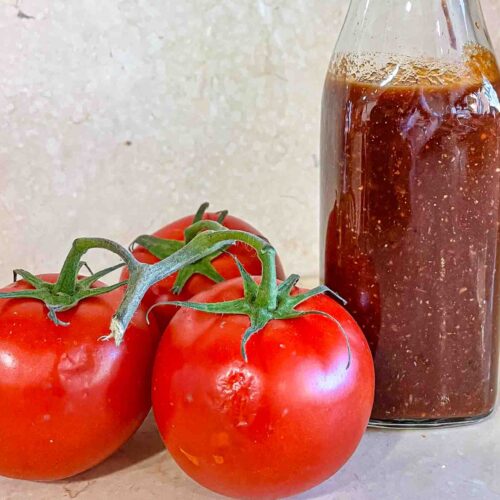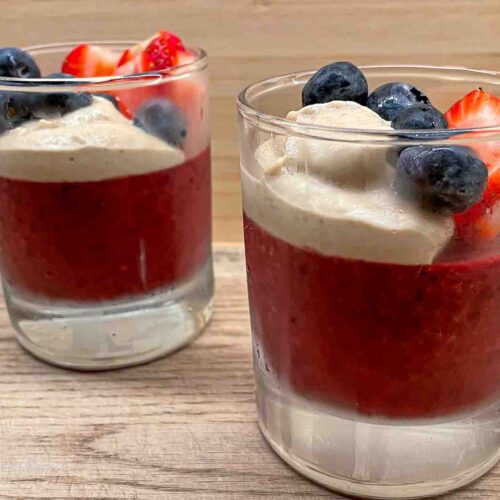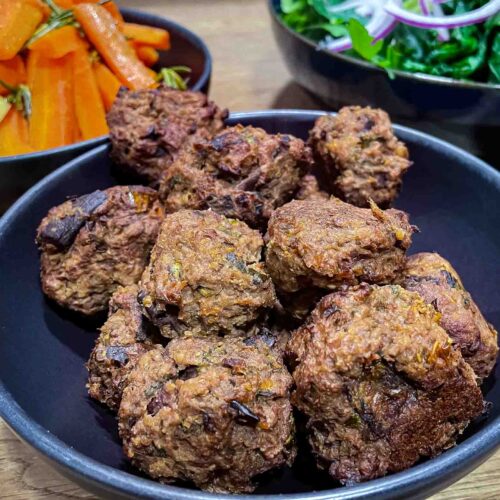On this page you will find not just a great recipe but also my best tips for how to work with sourdoughs. They can be tricky, so best to be prepared before taking on the sourdough bread challenge.
If you are new to sourdough bread making, then this particular recipe is a great one to start with because this dough is not as wet as some sourdoughs can be. A less runny dough is easier to work and shape.
Several years ago, I switched from using baker’s yeast in my breads to using a sourdough starter as the only leavening agent. And I’ve never looked back.
The flavor is simply outstanding!
The same can be said for the health properties. There simply is no comparison. Traditionally made sourdough breads win every time, hands down, when it comes to both flavor and health benefits.
Why Sourdough Bread Is So Good For Us.

Sourdough breads are good for us because they fall under the umbrella of so-called fermented foods. Fermented foods are very good at keeping our microbiome – all the good bacteria in our gastrointestinal system – in good working order.
Keeping our microbiome in tip-top shape has a very important positive impact on our overall health and well being. If it is out of whack, then we have a much higher risk of developing diseases – and not just of the gastrointestinal kind.
The microbiome has a direct link to most functions in the body. When it is not well balanced, it will have an impact on anything from our ability to fight off viruses to our mental health.
Eating a lot of red meat, processed foods or sugar can tip the balance of our microbiome in an unhealthy way. On the other hand, eating a varied diet focusing on fresh vegetables, fruits, legumes and whole grains, and including fermented foods – like yogurt, sauerkraut or sourdough breads – will ensure that our internal friendlies stay happy, healthy and ready to do their important jobs.
Sourdough Breads Contain Less Gluten and Regulates Blood Sugar

Traditionally baked sourdough breads contain less gluten, regardless of the type of flour used, than most commercially made breads. This is because the fermentation that goes on in traditional sourdough breads pre-digests the gluten, making this type of bread much lower in gluten and therefore easier to digest. A friend of mine, for example, who normally cannot eat gluten due to Crohn’s disease, has no problem whatsoever eating my sourdough breads made with whole spelt and whole wheat.
Breads made with sourdough also lower the glycemic load of a meal. Not just of the actual piece of bread eaten but of the entire meal in which that piece of sourdough bread is eaten. This means that including sourdough bread in your diet will have a positive impact on your blood sugar balance. Why is this important? Because your blood sugar balance is a core element which underpins all other mechanisms in the body. If it is out of kilter, then practically every other balance in the body will be affected, putting unnecessary stress on the body. This will eventually lead to disease.
Including sourdough bread in a meal also slows down digestion, making calories more likely to be available as energy rather than stored as fat.
Now that we’ve sorted out the whys, let’s turn to the hows.
Making Sourdough Bread.
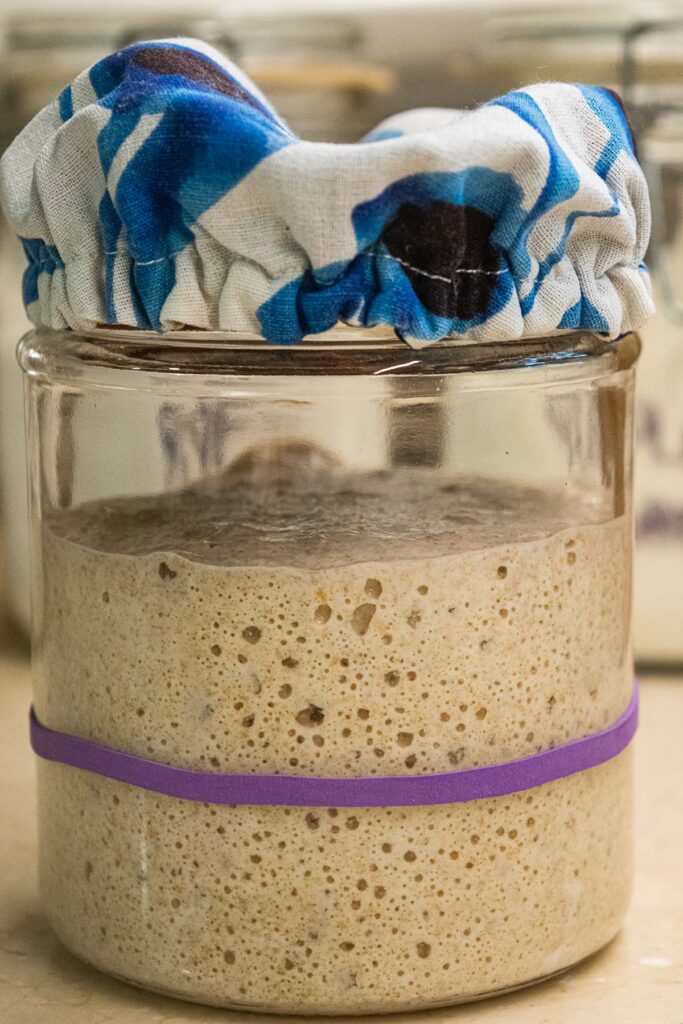
In order to start making sourdough breads you need a sourdough starter. If you do not have one you can easily make you own in about a week. Check out my tutorial for How To Make A Sourdough Starter From Scratch and then come back here to put that new starter to good use.
Techniques for working with sourdough.
Sourdoughs behave differently than breads made using baker’s yeast. Because of this, there are a few techniques you’ll need to get the hang of in order to make the best loaves. But fret not! These are all techniques you will quickly pick up on, even though the whole process may initially feel somewhat daunting.
Folding:
A technique which is central to sourdough bread making is to fold the dough. This is done one or several times during the first few hours of the rising cycle. This stretches the dough in a gentle manner, introduces air and aids the development of the gluten.
To fold the dough, first wet your hands. Then grab one edge of your dough with both hands, digging down towards the bottom of the bowl and along the edge of the bowl so you get a good grip. Then gently pull it up and fold it towards the center, essentially you’ll be folding it over itself. Try not to tear the dough. Turn the bowl 90º and repeat. Turn and repeat twice more until you’ve come full circle and performed a total of four folds. I have put a quick video below showing you how it is done.
Perform the first folding one hour after you first mixed all the dough ingredients together (after the autolyse – more on that below). If all you’ve got time for is one folding then that’s OK. Even better will be if you can do it twice or even three times, at one hour intervals.
Autolyse:
Another thing which bakers often do when making sourdough breads is what is called an autolyse. Autolyse is a technique in which you mix the water and flours with your starter and leave it to rest for anywhere from 30 minutes to a couple of hours, after which you mix in the salt and any other ingredients you may want to add. During this phase, enzymes in the flour begin to break down the starches and the proteins. This results is a dough that is easier to shape and work with and a loaf with better rise, flavor and texture. By not mixing in the salt from the beginning you essentially give the microorganisms a head start.
Texture:
Yet another way in which sourdough breads differ from regular yeast breads is that sourdoughs are usually wetter. Initially this takes some getting used to, as the dough is worked and shaped in a different way. You won’t be kneading it the “normal” way and when the time comes for you to shape the dough into breads and put them in the oven, you will need to work quickly yet gently so that the dough does not run away from you, so to speak, or deflate. A great way to ensure a good rise is to tuck the dough under itself as you shape it. Check out the video below for a visual on how this is done.
And Now On To The Recipe.
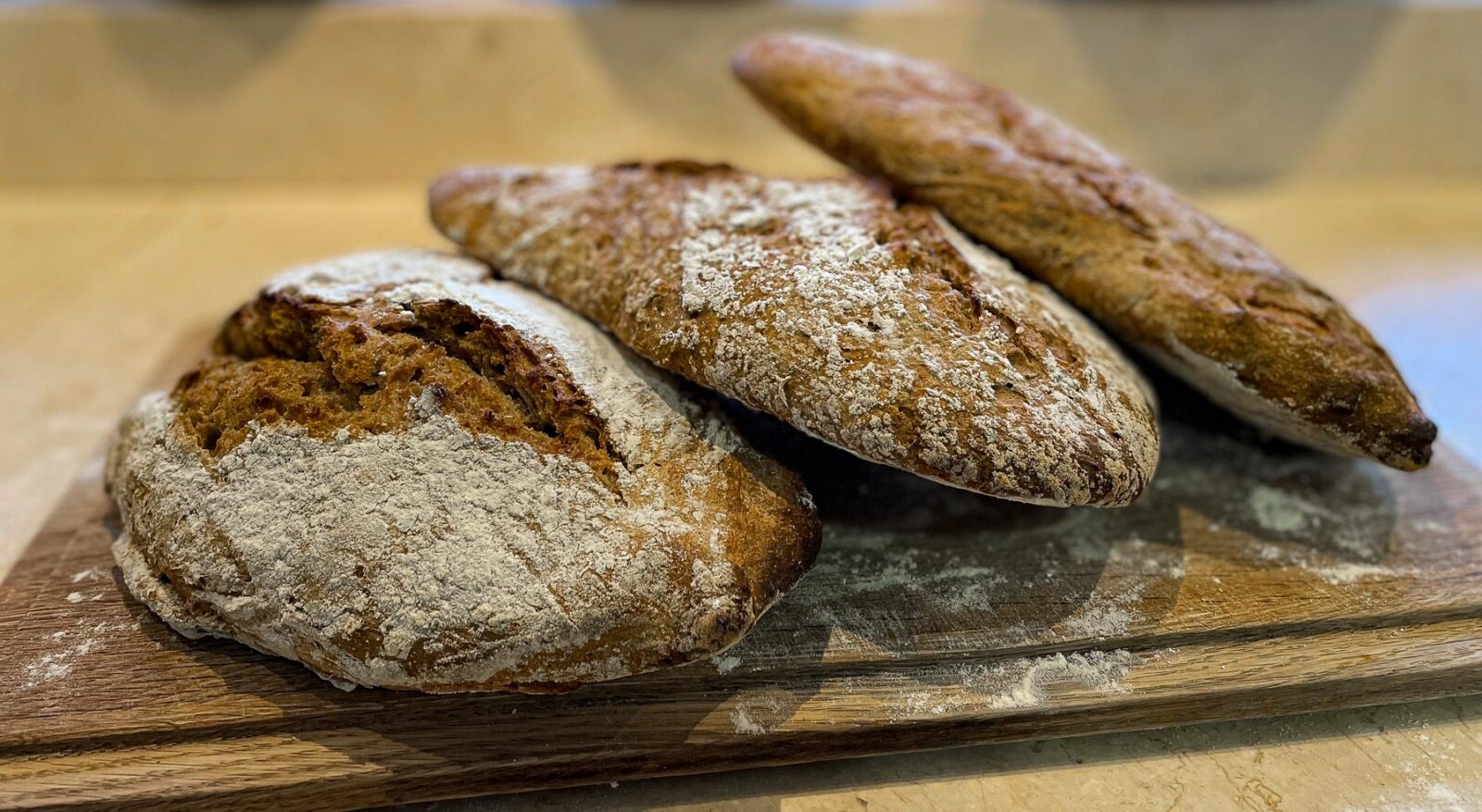

Rosemary Scented Whole Grain Sourdough Bread
Equipment
- A metal baking/pastry/pasta spatula is highly recommended. It is not essential but it does make the process much easier. Pictured below in the instructions.
Ingredients
- 500 ml water at room temperature
- About 250 g active sourdough starter If you use my starter recipe, then this is the amount you'll have in one portion
- 600 g whole spelt flour
- 50 g whole rye flour
- 2 teaspoons sea salt
- 1 ½ tablespoons dried rosemary optional
Instructions
- In a large bowl, mix the water with the sourdough starter and then mix in all the flours, stirring until there are no more lumps.
- Cover the bowl with a clean dish towel and let it rest for 30 minutes to 1 hour. This is what is known as an autolyse. You can read about this in the text above.
- After your dough has rested for 30 minutes to 1 hour, mix in the salt and the rosemary, if using. Knead the bread for as long as you have the energy to and ideally at least a few minutes. Because the dough is quite wet, this kneading is done with a spoon (I use a sturdy wooden spoon) and done by stirring, folding and pulling. Work that dough by folding it, stirring it and stretching it with the spoon.
- Once you've run out of energy, cover the bowl with the same dish towel and leave it for one hour.
- After one hour, you'll perform the first folding (check out my video above). Cover the bowl again and leave it for one more hour and then perform the second folding. If you've got time for it, you can perform one last folding after yet another hour. Cover the bowl in between. (If you've only got time for one folding then that is better than nothing).
- Once you have gone through the folding phase, leave the dough on the kitchen counter, covered, for about 4 hours or longer.
- After these 4+ hours you should place the bowl in the refrigerator or some place colder overnight. This will allow the flavors to develop slowly and give the loaf that deeply rich sourdough flavor.
- The next morning, take the bowl out of the fridge and place it back on the kitchen countertop. Leave it here for several hours before proceeding to the baking phase. I usually don't bake my breads until mid to late afternoon, but don't take my word for it. Your sourdough is different from mine and ambient temperature also plays a role, so you need to pay attention to your dough to know when it is ready to be baked. It will be at its peak once it is no longer rising but before it starts to deflate. This is the ideal time to put it in the oven. This timing is not an exact science but the change from one phase to the other also does not happen in a flash. Just pay attention to your dough and you'll be fine. A hint: As long as the dough is rising, the dough will be slightly curved downward at the edges of the bowl. Once it stops rising, the top will flatten out.
To shape and bake the breads (see video above):
- Turn on the oven to 250º C / 480º F. Place your baking tray inside the oven and leave it for at least 15 minutes. It needs to be very hot for best results.
- Next you’ll need to work fast in order to keep as much heat in the baking tray as possible. Here we go: Once your oven is thoroughly hot, take the baking tray out and cover it with a piece of baking paper, then gently pour the dough onto a generously floured worktop surface (countertop in most cases). Be sure to flour it well as the dough will be quite sticky.
- Start by folding the dough over itself once. This is easiest done using a metal spatula (see image below for the type I'm using). Then, and again using that same metal spatula, divide the dough into two equal portions. With the spatula in one hand and your other free hand, both dusted generously in flour, gently shape the bread and, as you do that, try to tuck the dough under itself. The idea is to make it tighter without loosing the air bubbles inside. This technique takes a bit of practice but you’ll get the hang of it after a few bakes.
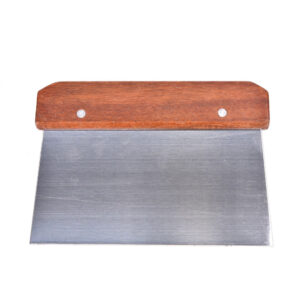
- Gently transfer the breads to the baking paper and place the tray back in the oven.
- Bake for 10 minutes at 250º C / 480º F, then lower the heat to 240º C / 460º F and finish baking the breads, about 25 to 30 minutes total or until nicely browned and they sounds hollow when you tap on them.
- Remove from heat and let the breads cool down on a cooling rack.
- Enjoy within 24 hours and then freeze any leftovers. Or make the Best Ever Garlic Bread. Link to recipe below.
To make buns instead of breads:
- Once your oven is thoroughly hot, take the baking tray out and cover it with a piece of baking paper, then gently pour the dough onto a generously floured worktop surface. Be sure to flour it well as the dough will be quite sticky.
- Gently cut the dough into desired sizes – I use a metal spatula which has been floured well – but be gentle! You want to keep the air bubbles intact as much as possible. Place the buns on the baking paper.
- Bake the buns at 250º C / 480º F for 12 – 15 minutes or until nicely browned.
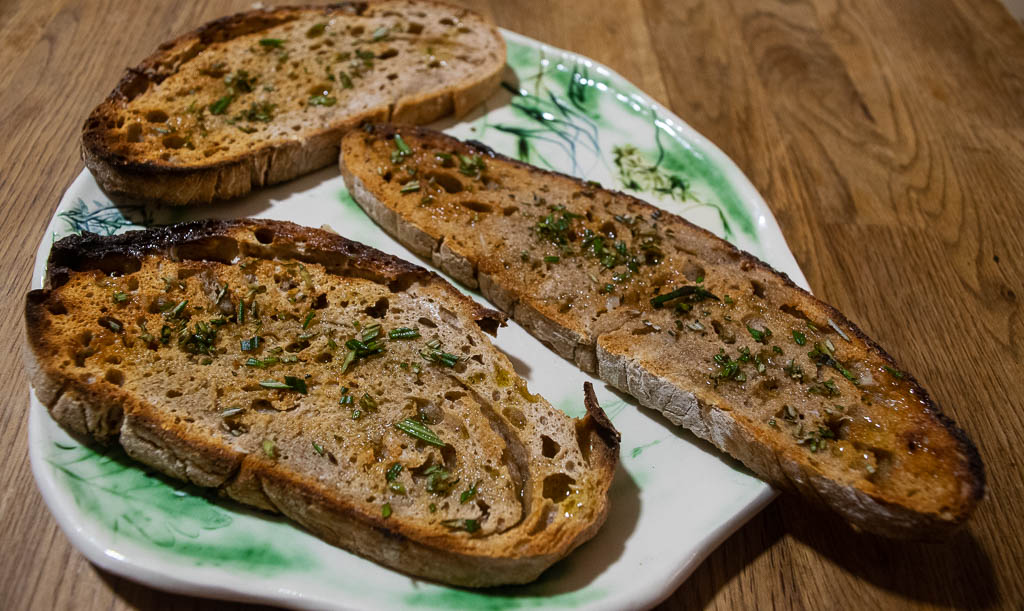
A great way to use up almost dry bread is to make my 2-minute Garlic Bread.
It you don’t eat all the bread within 24 hours you should freeze it. Sliced, quartered or whole, whichever way works best for you.


